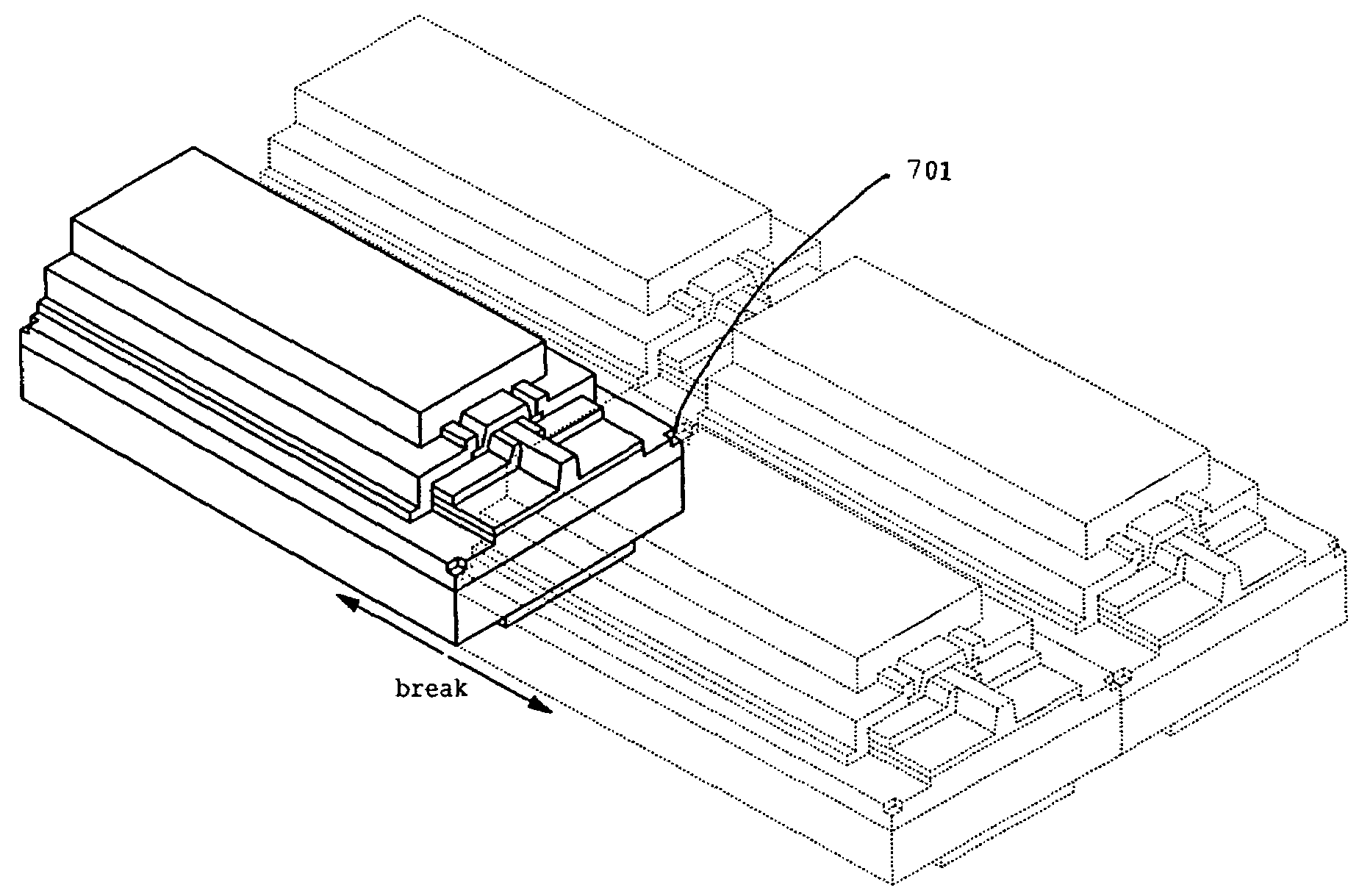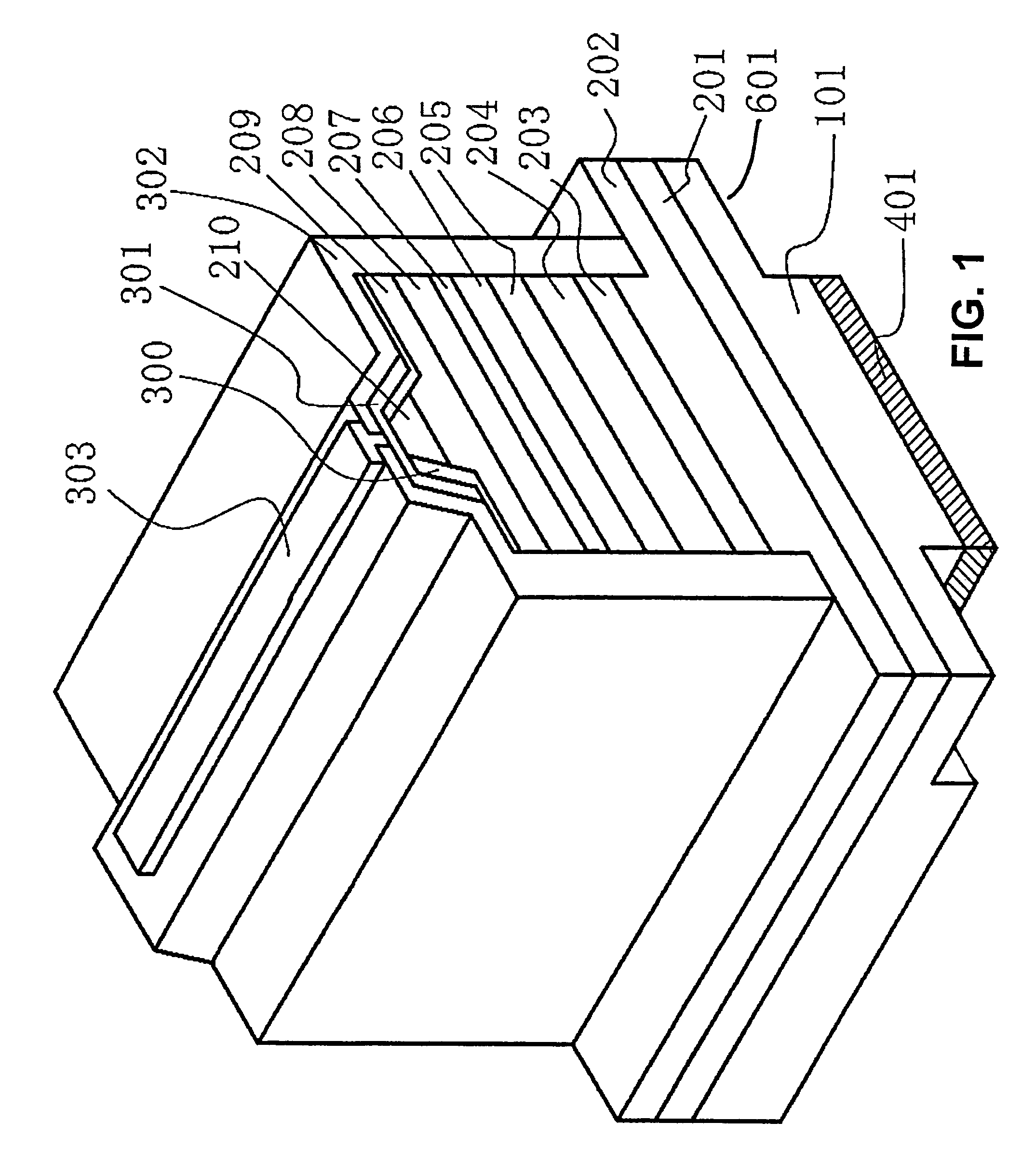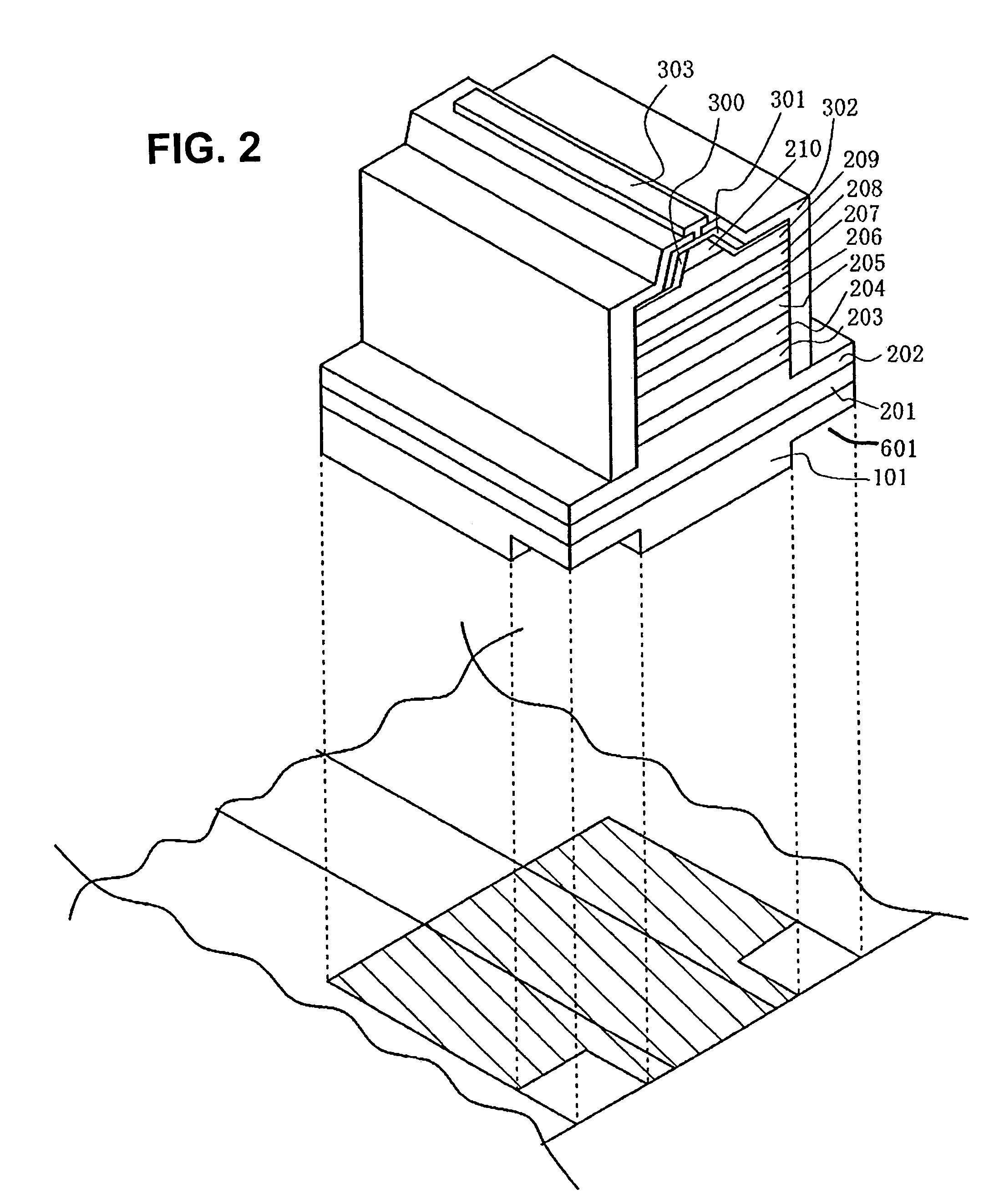Nitride semiconductor laser device and method of manufacturing the nitride semiconductor laser device
a laser device and semiconductor technology, applied in the direction of lasers, semiconductor laser structure details, semiconductor lasers, etc., can solve the problems of poor reproducibility upon cleavage, many defects may occur in the wafer of the laser device described, poor lifetime thought to be caused, etc., to improve practicability, prevent the detachment of the p-electrode and the chipping off of the ridge
- Summary
- Abstract
- Description
- Claims
- Application Information
AI Technical Summary
Benefits of technology
Problems solved by technology
Method used
Image
Examples
embodiments 1 and 2
(First Process)
[0054]First, a nitride semiconductor substrate 101 is prepared (FIG. 7A). A nitride semiconductor is grown on a foreign substrate such as sapphire or GaAs via a buffer layer (not shown). After that, the foreign substrate is removed by grinding, electromagnetic irradiation (excimer laser radiation etc.), or CMP, etc. and the nitride semiconductor substrate 101 is obtained. A surface having n-polarity is exposed on the nitride semiconductor where the foreign substrate was removed. A damaged layer may appear on the n-polarity surface as a result of removing the foreign substrate by grinding or excimer laser irradiation, the damaged layer can be removed by CMP or dry etching. By this process, the thickness and the surface roughness of the nitride semiconductor can also be adjusted by removing the damaged layer. The resulting nitride semiconductor substrate 101 comprises a first main surface and a second main surface with a thickness from 0.2 mm to 10 mm.
[0055]The foreign ...
embodiment 3
[0077]The nitride semiconductor device may have a structure which includes a current blocking layer. After forming the n-side contact layer 202, the crack preventing layer 203, the n-side cladding layer 204, and the n-side optical guide layer 205 are formed on the nitride semiconductor 1. The current blocking layer is then formed with a stripe-shaped opening with a width of from 0.5 to 3.0 μm and a thickness of 3,000 Å or less. Next, the active layer having a quantum well structure 206 is formed on the n-side optical guide layer which is exposed at the opening of the current blocking layer. Then, the p-side electron confinement layer 207, the p-side optical guide layer 208, the p-side cladding layer 209, and the p-side contact layer 210 are formed. The current blocking layer can be made of an i-type or intrinsic nitride semiconductor or other insulating materials such as SiO2, or Al2O3.
[0078]The current blocking layer is not limited to being formed after growing the n-side optical g...
example 1
[0080]A foreign substrate made of sapphire having a C-plane as a main surface is set in the MOVPE reactor vessel. The temperature is adjusted to 500° C. and a buffer layer made of GaN is grown to a the thickness of 200 angstroms, using trimethylgallium (TMG) and ammonia (NH3). After growing the buffer layer, the temperature is adjusted to 1050° C. and an underlayer made of GaN is grown to a thickness of 4 μm. A protective layer is partially formed on the underlayer in preparation for selective growth of the nitride semiconductor.
[0081]After the underlayer is grown, the wafer is taken out from the reactor vessel and a stripe-shaped photomask is disposed on the surface of the underlayer. Then, a protective layer of SiO2 is formed with a stripe width from 10 to 300 μm and a stripe interval (window portion) from 5 to 300 μm.
(Nitride Semiconductor Substrate)
[0082]After forming the protective layer, the wafer is once again set in the reactor vessel of MOVPE. The temperature is adjusted to...
PUM
| Property | Measurement | Unit |
|---|---|---|
| width | aaaaa | aaaaa |
| length | aaaaa | aaaaa |
| depth | aaaaa | aaaaa |
Abstract
Description
Claims
Application Information
 Login to View More
Login to View More - R&D
- Intellectual Property
- Life Sciences
- Materials
- Tech Scout
- Unparalleled Data Quality
- Higher Quality Content
- 60% Fewer Hallucinations
Browse by: Latest US Patents, China's latest patents, Technical Efficacy Thesaurus, Application Domain, Technology Topic, Popular Technical Reports.
© 2025 PatSnap. All rights reserved.Legal|Privacy policy|Modern Slavery Act Transparency Statement|Sitemap|About US| Contact US: help@patsnap.com



